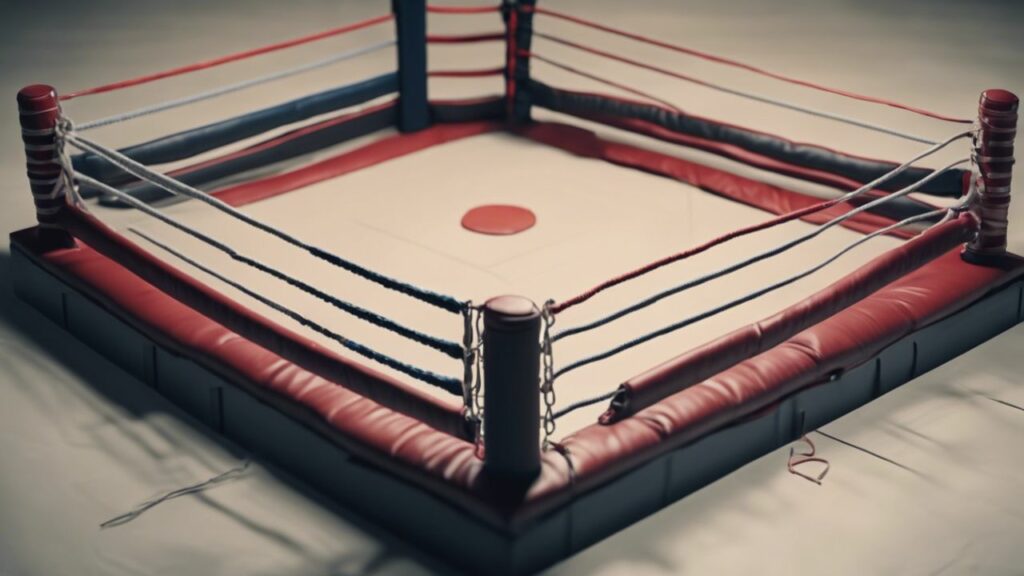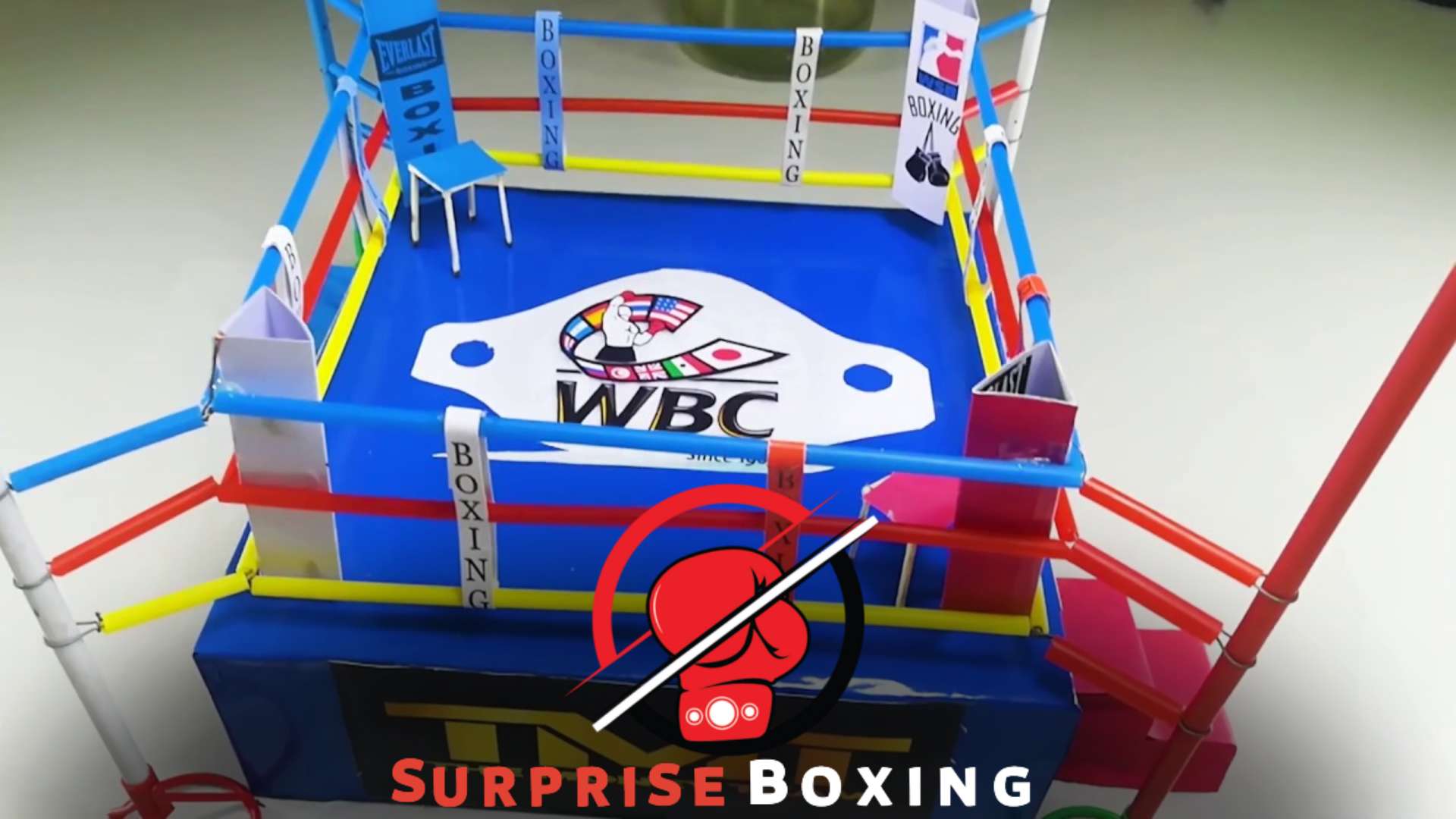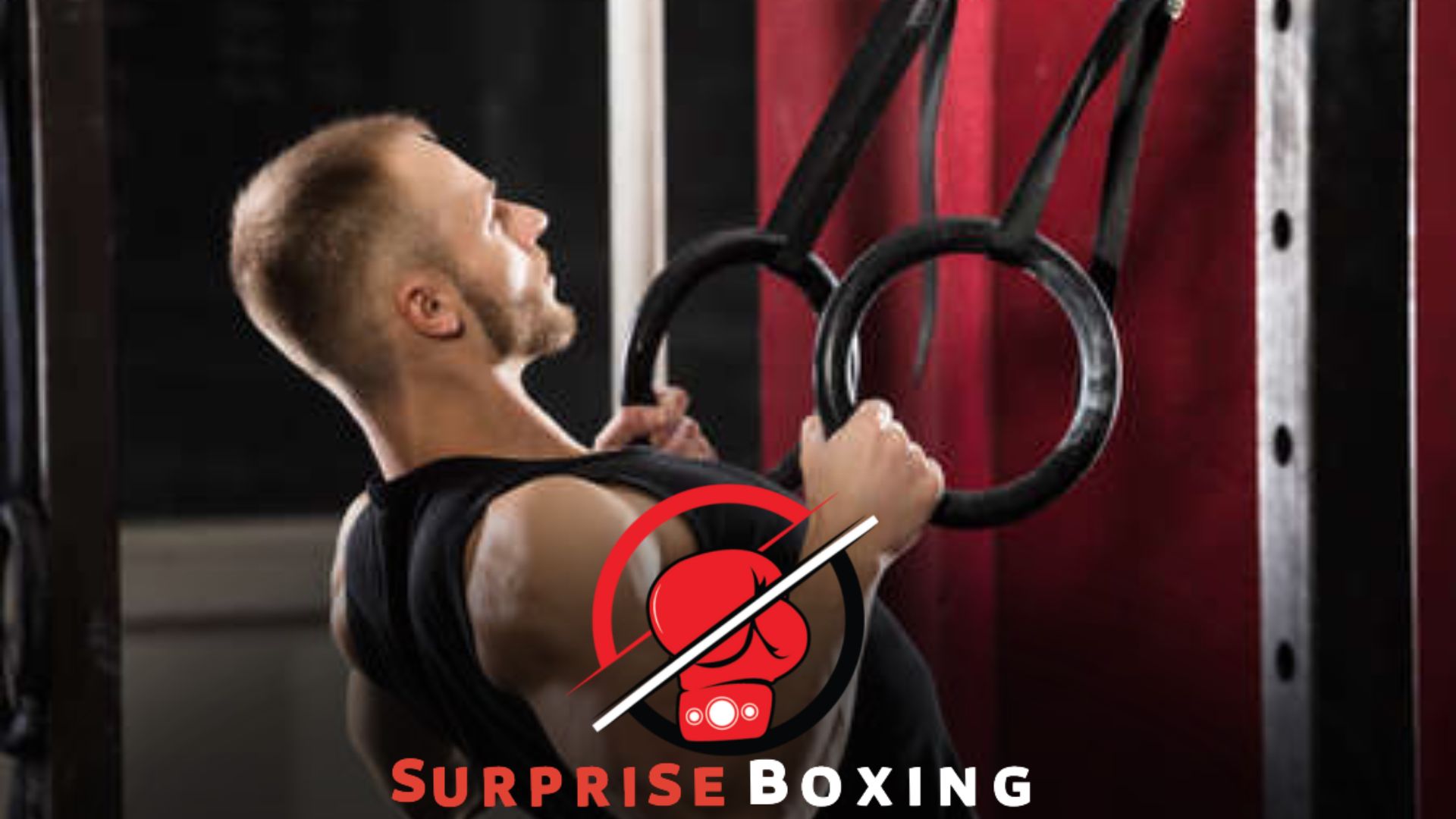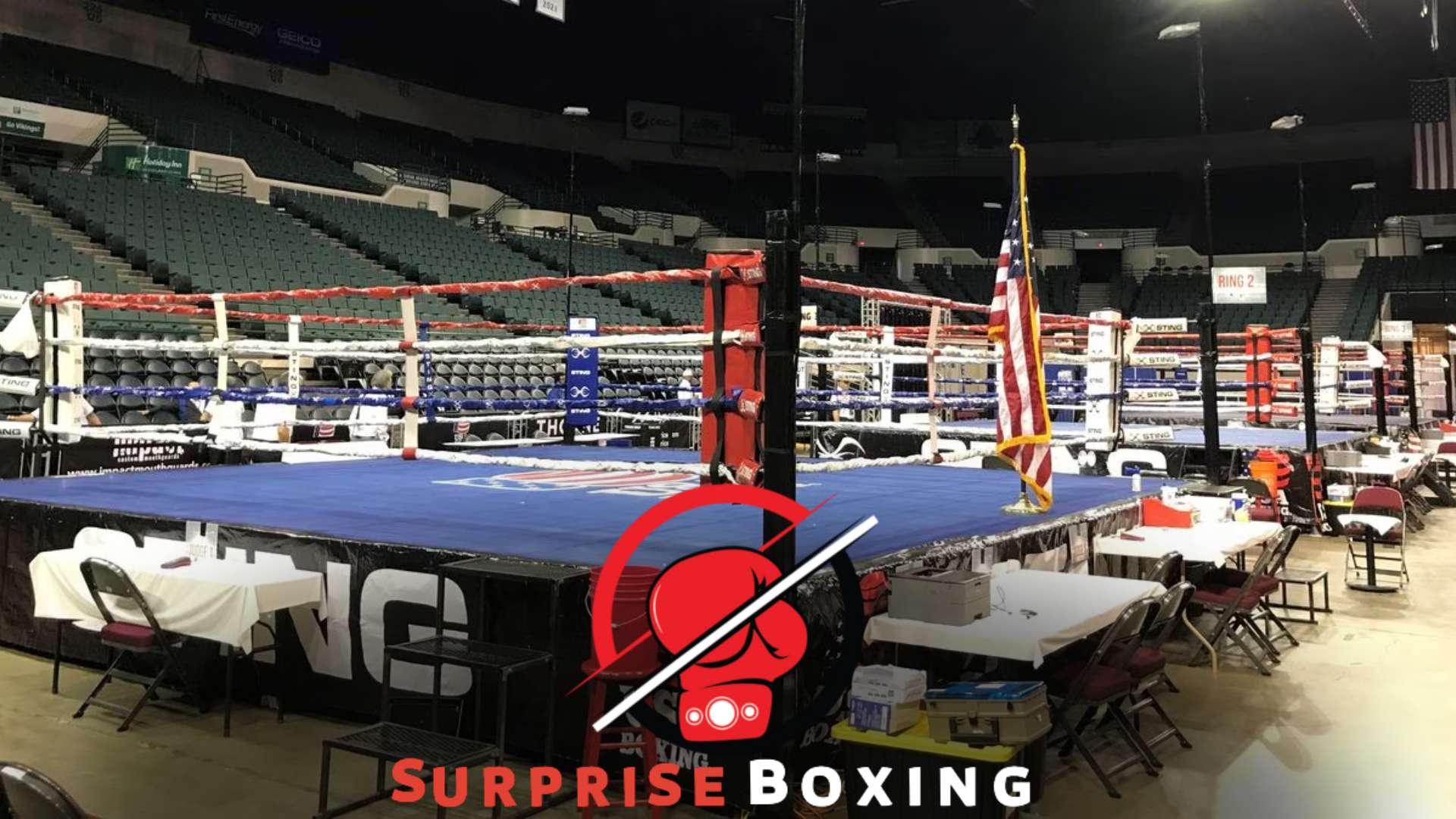To assemble a boxing ring, lay down the ring posts in their designated positions and firmly secure them to the floor. Next, connect the ropes to the posts and tighten them for proper tension.
With the ropes in place, fasten the ring canvas to the floor using bungee cords or other secure attachments. Finally, ensure all components are correctly secured and inspect the ring for any loose or unsafe areas before use.
Setting up a boxing ring may seem like a daunting task, but with the right instructions and a bit of patience, it can be accomplished smoothly.
Whether you are a gym owner, a promoter, or a passionate boxing enthusiast, knowing how to assemble a boxing ring is essential. A properly constructed ring provides a safe and professional environment for boxers to train and compete.
In this guide, we will walk you through the step-by-step process of assembling a boxing ring, from placing the ring posts to securing the canvas.
So, let’s dive in and learn how to create the perfect boxing ring for your needs.
Preparing for Assembly: Setting the Foundation for a Flawless Boxing Ring Setup

Setting up a flawless boxing ring requires careful preparation and attention to detail. This article provides essential guidelines for assembling a boxing ring, ensuring a strong foundation for an optimal setup.
Before you dive into assembling a boxing ring, it’s crucial to start with the right foundation. This will ensure a smooth and seamless setup process while guaranteeing the safety and stability of the ring itself.
In this section, we’ll explore the essential steps you need to take to prepare for assembly.
Let’s jump right in!
Planning the Location
To start, you must carefully consider the location of your boxing ring. Keep the following points in mind:
- Clear space: Choose an area with ample room to assemble the ring, allowing for proper side clearance.
- Level surface: Ensure the surface is level and free from any unevenness. This is crucial for both safety and stability.
- Indoor or outdoor: Decide if you want to set up the ring indoors or outdoors. Take into account weather conditions and available space.
Gathering the Necessary Tools and Equipment
Equipping yourself with the right tools will make the assembly process more efficient. Here’s what you’ll need:
- Ring components: Collect all the necessary components, including corner posts, ropes, turnbuckles, and canvas. Refer to the manufacturer’s instructions for specific details.
- Essential tools: Prepare a toolkit that includes measuring tape, wrenches, screwdrivers, and pliers. These tools will help you with adjustments and fastenings.
Reading the Instructions
Before starting the assembly, read the manufacturer’s instructions thoroughly. Pay attention to the details and steps provided, as they can vary depending on the brand and model of the boxing ring.
A clear understanding will help you avoid mistakes during setup.
Inspecting and Cleaning All Components
Carefully inspect each boxing ring component, ensuring everything is in good condition. Look out for any damages, missing parts, or defects.
Cleaning all components before assembly will help maintain hygiene and provide a visually appealing ring.
Preparing the Base
The base of the boxing ring plays a vital role in stability and safety. Follow these steps for a solid foundation:
- Anchor points: Identify the anchor points and mark them on the surface. These points will be used to secure the corner posts.
- Weight distribution: Ensure the weight distribution across the base is even to prevent bending during use.
- Leveling: Use a leveling tool to ensure the base is perfectly level. This will avoid any instability issues once the ring is assembled.
Securing Corner Posts and Ropes
Properly securing the corner posts and ropes is crucial for ring stability. Follow these steps:
- Attach corner posts: Attach the corner posts to the designated anchor points securely.
- Install and tension ropes: Install the ropes by attaching them to the corner posts. Ensure proper tension by adjusting the turnbuckles.
Laying and Fastening the Canvas
The canvas provides a safe and non-slip surface for fighters. Here’s how to lay and fasten it:
- Laying the canvas: Place the canvas over the ring and align it properly, ensuring it covers the entire surface.
- Fastening the canvas: Attach the canvas to the ring using the provided fasteners or clips. Make sure it is tight and wrinkle-free for a professional look.
Checking for Safety and Stability
Once the assembly is complete, perform a thorough check to ensure safety and stability:
- Stability test: Give the ring a gentle shake to ensure it is stable and well-positioned.
- Corner post stability: Verify that the corner posts are securely fastened and not wobbly.
- Rope tension: Double-check the tension of the ropes to ensure they are properly stretched and secure.
Following Local Regulations and Guidelines
Always be aware of any local regulations or guidelines regarding boxing ring assembly. Ensure that your setup adheres to the specific requirements in your area to guarantee a safe and compliant environment.
Boxing Ring Components

Discover the key components of a boxing ring for a flawless assembly. From the ropes to the canvas, understanding the anatomy of this combat arena is crucial for a successful setup.
Master the art of assembling a boxing ring with our comprehensive guide.
Picture yourself in a boxing arena, surrounded by the electrifying energy of the crowd. But have you ever wondered what goes into creating a boxing ring?
Each component, from the ropes to the turnbuckles, is crucial in ensuring a safe and captivating experience for the fighters and the audience.
We will delve into the anatomy of a boxing ring, uncovering the various components required for a flawless assembly.
The Ring Canvas: The Foundation of the Boxing Ring
- The ring canvas forms the foundation of the boxing ring, providing a durable and padded surface.
- Made of heavy-duty vinyl or canvas material, the ring canvas ensures shock absorption and prevents severe injuries during intense fights.
- The material is stretched tightly across the ring frame, creating a firm yet slightly cushioned surface for the fighters to move around.
The Ring Ropes: Establishing Boundaries and Safety
- The ring ropes encircle the boxing ring, serving as boundaries and providing safety for the fighters.
- Usually consisting of three to four ropes, they are made from nylon or other resilient materials to withstand the force of impact.
- The ropes are stretched tightly around the ring posts, allowing the referee to enforce the rules and maintain control during the bouts.
The Ring Posts and Corners: Anchoring the Boxing Ring
- The ring posts and corners are integral to stabilizing the boxing ring and providing structural support.
- Typically made from steel or aluminum, these posts are securely fixed to the ground, ensuring stability and preventing any unwanted movement.
- The corners where the ring ropes intersect are reinforced to withstand the tension created by the ropes and provide additional support.
The Turnbuckles: Fine-Tuning the Tension
- Turnbuckles are essential components used to fine-tune the tension of the ring ropes and maintain their firmness.
- With a metal frame and threaded rods, turnbuckles can be tightened or loosened to achieve the desired level of rope tension evenly.
- By adjusting the turnbuckles, the ropes can be kept at optimal tension, ensuring the safety of the fighters and fair play.
The Ring Padding: Cushioning the Impact
- The ring padding, often made of foam or similar materials, provides an additional cushioning layer between the canvas and the frame.
- This padding helps absorb impact, reducing the risk of injuries to the fighters during intense matches.
- The cushioning also creates a comfortable surface, allowing the fighters to move agilely, making the bouts more captivating.
The Corner Stools: Resting and Recovery
- In each corner of the boxing ring, corner stools are resting spots for the fighters between rounds.
- The stools offer a momentary respite, enabling the boxers to recover and receive guidance and assistance from their team.
- The corner stools act as essential elements, allowing the fighters to regain their energy for the subsequent rounds.
The Ring Skirt: Enhancing the Visual Appeal
- The ring skirt refers to the decorative cover that hangs around the perimeter of the boxing ring, concealing the lower part.
- Often customized with logos, colors, or sponsors’ branding, the ring skirt enhances the visual appeal of the ring.
- This component adds flair and professionalism to the boxing event, contributing to the overall atmosphere and presentation.
By understanding the various components that make up a boxing ring, you can now appreciate the complexity involved in its assembly.
From the ring canvas to the turnbuckles, each element serves a vital purpose in ensuring a safe, captivating, and high-performing environment for fighters and fans alike.
So, the next time you witness an action-packed boxing match, take a moment to marvel at the meticulous assembly of the ring, knowing that it sets the stage for an extraordinary spectacle.
Step-By-Step Assembly Guide
Discover the ultimate step-by-step assembly guide for building your boxing ring with precision and confidence.
Are you excited to create your very own boxing ring? Whether you’re a professional trainer or an enthusiastic boxing fan, assembling a boxing ring can be a rewarding experience.
In this step-by-step guide, we will walk you through building your boxing ring with precision and confidence.
Step 1: Gather the Necessary Tools and Equipment
Before diving into the assembly process, having all the tools and equipment you’ll need is crucial. Here’s a list of essentials to ensure a smooth assembly:
- Measuring tape: This will help you mark the dimensions accurately.
- Drill: A power drill will make the process faster and more efficient.
- Wrenches: Different sizes of wrenches will come in handy for tightening bolts.
- Zip ties: Use these to secure the boxing ring’s padding and ropes.
- Rope cutter: To cut the ropes with precision.
- Level: Ensures that your boxing ring is perfectly balanced.
Step 2: Prepare the Area for Installation
Before starting assembly, it’s important to prepare the area where your boxing ring will be installed. Follow these steps to ensure a suitable environment:
- Clear the space: Remove any obstacles, debris, or loose items from the designated area.
- Level the ground: Use a leveling tool to ensure the surface is even and stable.
- Measure the dimensions: Double-check and mark the dimensions of the ring to ensure accuracy.
Step 3: Assemble the Base Frame
The base frame forms the foundation of your boxing ring. Follow these instructions to build the base frame:
- Lay out the base pieces: Begin by placing the base pieces according to the instructions provided.
- Connect the base pieces: Use the provided bolts and screws to secure the base pieces together.
- Tighten the bolts: Ensure all bolts are tightened properly using a wrench.
- Check for stability: Verify that the base frame is sturdy and level.
Step 4: Install the Ring Posts
Next, you’ll need to install the ring posts, which provide support for the ropes and turnbuckles:
- Attach the ring posts: Fix the ring posts securely to the designated spots on the base frame.
- Fasten the ring posts: Use the appropriate screws or bolts to fasten the ring posts tightly.
- Double-check the stability: Ensure that the ring posts are stable and perpendicular to the ground.
Step 5: Secure the Ropes and Turnbuckles
Now it’s time to install the ropes and turnbuckles to complete the structure of your boxing ring:
- Position the ropes: Start by placing the ropes evenly around the inner circumference of the ring posts.
- Attach the ropes: Secure the ropes to the ring posts using zip ties or other provided fasteners.
- Install the turnbuckles: Connect them to the desired points of the ropes and tighten them using a wrench.
- Adjust the tension: Use the turnbuckles to adjust the tension of the ropes until they are uniformly taut.
Step 6: Add the Padding and Canvas
The final steps involve adding the padding and canvas, which will provide a safe and comfortable surface for boxers:
- Install the padding: Attach the padding to the base frame using the appropriate fasteners.
- Check for proper positioning: Ensure the padding is aligned correctly, covering the entire base frame.
- Lay the canvas: Place the canvas on top of the padding and stretch it tightly across the ring.
- Secure the canvas: Fasten the canvas securely to the base frame using the provided attachment points.
Congratulations! You have successfully assembled your boxing ring. Now, you can enjoy training sessions or spectate thrilling boxing matches in the comfort of your own space.
Stay safe, train hard, and may your boxing ring become the birthplace of champions.
Ensuring a Secure and Professional Boxing Ring Setup
Ensure a secure and professional boxing ring setup focusing on safety and quality assurance. Follow these guidelines for assembling a boxing ring with care and precision.
Assembling a boxing ring requires more than just putting together the physical components. Safety and quality assurance are essential aspects that should not be overlooked.
Following the guidelines and best practices outlined below, ensure your boxing ring setup is secure and maintains a professional standard.
Regular Inspections: Keeping An Eye on the Details
Regular inspections are crucial to ensure the safety and reliability of your boxing ring. Perform these inspections before and after every use and during scheduled maintenance visits.
Look for any signs of wear and tear, loose bolts, damaged ropes, or any other potential hazards.
By catching and addressing these issues early on, you can maintain the quality and safety of your boxing ring.
Quality Materials: Building a Strong Foundation
Using high-quality materials is paramount to a secure and professional boxing ring setup. Opt for durable materials built to withstand the demands of boxing.
From the ring ropes to the corner pads, ensure all components are made of robust materials that can withstand repeated use and potential impact.
Secure the Ring Posts: A Sturdy Base
The ring posts provide the foundation for the entire boxing ring setup. It is essential to ensure they are securely anchored and stable.
Follow the manufacturer’s instructions when attaching the posts to the floor, using suitable equipment and techniques.
This will prevent any unnecessary movement or instability during use, maximizing the safety of the boxing ring.
Proper Padding: Protecting the Participants
One of the vital elements of a safe boxing ring setup is proper padding. Ensure all corner pads, turnbuckle pads, and ring aprons are adequately padded to protect the participants from potential injuries.
The padding should be thick enough to absorb impact and provide cushioning, minimizing the risk of harm during boxing matches or training sessions.
Secure Ropes and Turnbuckles: Maintaining Tension
Properly securing the ring ropes and turnbuckles is essential to create a professional boxing ring setup. Ensure the ropes are tightly tensioned and securely fastened to the ring posts.
This will prevent the ropes from sagging or becoming loose during use, maintaining the integrity of the boxing ring structure and reducing the risk of injuries.
Clear and Visible Markings: Guiding the Participants
Markings on the boxing ring are aesthetically pleasing and crucial for safety purposes. Ensure the ring canvas features clear and visible markings, indicating the ring boundaries, corner positions, and other vital areas.
These markings will guide the participants during matches, reducing the chances of accidental injuries.
Floor Surface: Providing Stability and Traction
The floor surface beneath the boxing ring plays a significant role in maintaining stability and traction. Ensure the surface is level, sturdy, and free from any obstacles or hazards.
This will prevent unwanted movement or slips, allowing the participants to move confidently within the ring.
Secure Ring Covers: Protecting the Ring
When the boxing ring is not in use, it is essential to protect it from dust, moisture, and potential damage. Utilize secure ring covers specifically designed for storage purposes.
These covers will help prolong the lifespan of the boxing ring and ensure that it remains in peak condition for future use.
Safety Guidelines: Educating the Participants
Safety should be a top priority when using a boxing ring. Develop and enforce comprehensive safety guidelines for all participants, including boxers, trainers, and officials.
These guidelines should cover topics such as proper use of equipment, the importance of warming up and stretching, and general safety precautions during matches or training sessions.
By promoting a culture of safety, you can minimize the risk of accidents and injuries.
Professional Assistance: Expert Guidance
When in doubt or faced with complex issues, seek professional assistance. Consulting with experts specializing in boxing ring assembly and maintenance can provide valuable insights and ensure you follow the best practices.
Their knowledge and experience can help you create a boxing ring setup that meets high safety and quality standards.
Remember, by prioritizing safety and quality assurance, you can ensure a secure and professional boxing ring setup that meets the needs of participants and promotes a safe and enjoyable boxing experience.
Final Touches and Finishing Steps: Adding Polish and Professionalism
Learn how to add the final touches to your boxing ring assembly for a polished and professional look. These finishing steps will enhance the aesthetics and ensure a top-notch boxing experience.
Paying attention to the final touches and finishing steps is crucial to assembling a boxing ring successfully. These details will not only enhance the aesthetics but also contribute to the overall professionalism of the ring.
Here’s what you need to consider:
1. Lighting
- Install adequate lighting fixtures around the ring to ensure clear visibility for the boxers and spectators.
- Utilize adjustable light settings to enhance different areas of the ring during specific events.
2. Branding
- Display banners or signage around the ring with the name and logo of your boxing gym or club.
- Consider using customized corner pads that showcase your brand identity.
3. Ring Skirt
- Attach a ring skirt to the sides of the boxing ring. This fabric covers the space between the ring floor and the canvas, giving the ring a more polished look.
- Opt for a skirt color that complements your branding or adds visual appeal to the environment.
4. Ring Ropes
- Tighten the ropes evenly, ensuring they are secure and at the appropriate tension level.
- Coordinate the color of the ropes with your branding or the overall theme of your boxing events.
5. Corner Stools
- Provide sturdy and comfortable corner stools for each corner of the ring. These stools allow the trainers and coaches to assist the boxers during the breaks.
- Make sure the stools are well-positioned and easily accessible for quick corner work.
6. Canvas
- Ensure the canvas is clean, smooth, and well-stretched across the ring.
- Consider adding your gym’s logo or an artwork design on the canvas for a personalized touch.
7. Ring Announcements
- Install a sound system that can transmit clear announcements throughout the venue.
- Hire a professional ring announcer to deliver a captivating introduction for each fight.
8. Timekeeping and Bell
- Have a reliable timekeeping system, such as a digital timer or clock, visible to the audience and participants.
- Invest in a high-quality boxing bell that produces a distinct and audible sound to mark the beginning and end of each round.
9. First-Aid Equipment
- Keep a fully stocked first-aid kit ringside to address minor injuries or medical emergencies promptly.
- Train the staff on how to handle medical incidents professionally.
10. Photography and Videography
- Collaborate with professional photographers and videographers to capture high-quality images and videos of the bouts.
- Share these visual assets on your website or social media platforms to promote future events and showcase your boxing ring’s professionalism.
By focusing on these final touches and finishing steps, you can elevate your boxing ring’s overall appearance and atmosphere, leaving a lasting impression on both the boxers and the audience.
Maintenance and Storage
- Proper assembly and regular maintenance are essential to ensure your boxing ring stays in top-notch condition.
- Following the assembly instructions meticulously and storing the ring correctly, you can keep it pristine for years.
- Maintaining and properly storing your boxing ring is crucial to ensure its longevity and the safety of the participants.
By following these maintenance and storage tips, you can keep your boxing ring in pristine condition:
1. Regular Cleaning
- Clean the boxing ring after each use to remove sweat, blood, or debris.
- Use a mild detergent and warm water to clean the canvas and ropes.
- Scrub gently with a soft brush or cloth to avoid damaging the materials.
2. Inspecting for Damage
- Regularly inspect the boxing ring for any signs of wear and tear.
- Check the canvas for rips, tears, or loose threads that can affect safety.
- Examine the ropes and turnbuckles for any damage or weakening.
3. Tightening and Adjustments
- Ensure that the ropes are properly tensioned and adjusted for each use.
- Check the turnbuckles to ensure they are securely tightened.
- Test the stability of the platform to avoid any wobbling or shifting.
4. Lubrication
- Apply lubricant to the moving parts of the boxing ring, such as the turnbuckles and hinges.
- This helps prevent rust, reduces friction, and ensures smooth adjustments.
5. Protective Cover
- Consider covering the boxing ring with a protective cover when not in use.
- This helps shield it from dust, sunlight, and potential damage.
6. Proper Storage
- If you need to disassemble and store the boxing ring, follow the manufacturer’s instructions.
- Store each part in a clean and dry environment to prevent moisture and degradation.
7. Regular Maintenance Schedule
- Create a regular maintenance schedule to keep track of cleaning, inspections, and necessary repairs.
- This ensures your boxing ring remains in top condition and is ready for use.
Remember, proper maintenance and storage of your boxing ring not only prolongs its lifespan but also ensures the safety and enjoyment of every participant. You can maintain a pristine boxing ring for years by dedicating time to these essential tasks.
Frequently Asked Questions
How Much Space Is Needed to Assemble a Boxing Ring?
You will need at least 20 feet by 20 feet to assemble a boxing ring. This allows enough room for the ring and space for the fighters and officials to move around safely.
What Are the Essential Parts of a Boxing Ring?
The essential parts of a boxing ring include the ropes, turnbuckles, ring posts, canvas, and corner pads. These components work together to create a sturdy and safe environment for boxing matches.
How Long Does It Take to Assemble a Boxing Ring?
The time it takes to assemble a boxing ring can vary depending on your experience level and the size of the ring. Generally, it takes about 2-3 hours for a team of experienced professionals to assemble a standard-sized boxing ring.
What Tools Are Needed to Assemble a Boxing Ring?
You will need essential tools such as a wrench, pliers, screwdriver, and rope cutter to assemble a boxing ring. It is also recommended to have a ladder or step stool for reaching higher areas of the ring.
Can I Assemble a Boxing Ring By Myself?
While assembling a boxing ring yourself is possible, having at least one other person to help is generally recommended. The process can be physically demanding, and having assistance will ensure that the ring is assembled correctly and safely.
Conclusion
Assembling a boxing ring may seem complex, but it can be a manageable project with the right tools and guidance.
Following the step-by-step instructions in this blog post, you can confidently set up a boxing ring that meets all safety and professional standards.
Remember to carefully read and understand the instruction manual, gather all necessary materials, and enlist the help of a few strong individuals to assist you.
Take time to ensure each component is adequately secured and adjusted, paying close attention to the ropes, turnbuckles, and canvas.
With a well-assembled boxing ring, you’ll be able to create a safe and professional environment for athletes to train, compete, and showcase their skills.
Start assembling your boxing ring today and watch as your dream of becoming a home gym owner becomes a reality.














